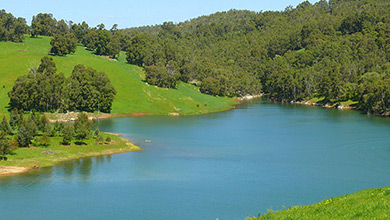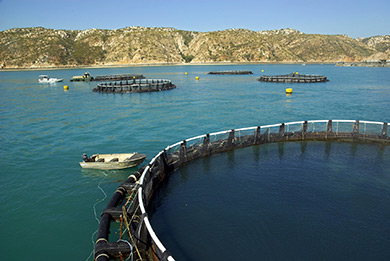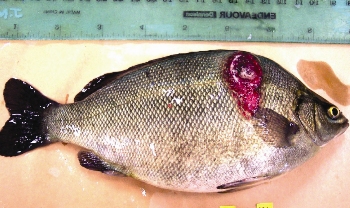Translocation is the movement of species, by people, from one area to another. It can be deliberate or accidental.
For our purposes, translocation means moving live fish into and within Western Australia.
Translocation of fish is a common occurrence on a local, national and international scale and can happen for a number of reasons.
If you plan to move live fish into and within WA you will need to apply for a Translocation Approval. We have provided detailed information on how to apply for a translocation approval or authority.
If you have any questions, please contact the Department at translocation@dpird.wa.gov.au, or phone 1300 374 731 (1300 DPIRD1).
Accidental/unintentional
Boaters and fishers can accidentally translocate aquatic invaders with gear and boats that have not been properly cleaned, drained and dried.
The sale of diseased bait may result in the introduction of a pathogen into an aquatic ecosystem. Other unwanted pest species can also be packaged with bait.
Flooding of farm dams and similar structures in wet months can sometimes lead to the overflow of invasive species (such as silver perch) into natural water bodies, potentially leading to loss of
biodiversity.

Private farm dam to be stocked with rainbow trout near Donnybrook.
Deliberate
The movement of aquatic organisms in the aquarium trade.
Stocking of water bodies for recreational fishing with suitable species (e.g. trout).
For use in the aquaculture industry.
Supply to the restaurant trade.
Research/scientific or educational purposes.
 Barramundi farming near Broome
Barramundi farming near Broome
The movement of live fish into or within an area where they are not native can potentially cause many problems to that area’s natural ecosystem. Problems can include:
extinction of native species;
spread of disease;
reduction in biodiversity;
lowering of habitat quality due to reduction of space and/or food resources; and
damage to natural habitat (e.g. carp stir up sediment when feeding, often leading to poor water quality and aquatic vegetation loss).
The greatest translocation risks are with the introduction of non-native species. The European carp (Cyprinus carpio) is one such example. Carp are thought to be the cause of introduction of the anchor worm (Lernaea cyprinacea). This parasite has the potential to infect a high number of native fish, and can be fatal.
Redfin perch (Perca fluviatilis) were introduced to Australia in the 1860s for angling. They are now widespread across much of southern Australia, including WA’s south-west. Redfin perch are thought to have spread epizootic haematopoietic necrosis (EHN) virus.
 |
| EUS or red spot disease in a silver perch caused by the fungus Aphanomyces invadans. |
As the State’s lead agency for aquatic biosecurity, the Department of Fisheries oversees the management of risks associated with translocation. Industry and the community also have a huge part to play in helping us reduce the risks presented by translocation.
Our
 Translocation Policy
Translocation Policy protects fish populations, fish habitats and natural aquatic biodiversity. It also protects industry and the community from the risks associated with the translocation of live fish.
If you suspect you have identified an introduced freshwater pest, marine pest or aquatic disease in a WA aquatic environment, please report it to us. We publish a series of biosecurity alerts.
Translocation purposes (activity type)
The most common activities that require translocation of fish include:
Commercial aquaculture – where the fish are kept, for commercial reasons, under the conditions of a commercial aquaculture licence.
Non-commercial aquaculture – where the fish are kept on a private property and used in aquaponics, or for private consumption and not offered for sale.
The restaurant trade – where the fish are kept live in a restaurant for human consumption on site.
Stocking – where the fish are kept in a private farm dam or similar structure for recreational fishing purposes.
Scientific research and education.
Aquarium and ornamental purposes.
Translocation approvals may also be granted for specific species if they are covered by specific management arrangements outlined in a series of Fisheries Management papers.
There are Fisheries Management papers covering translocation management of:
Silver perch image: Supplied by Queensland Department of Agriculture, Fisheries & Forestry, 2014.